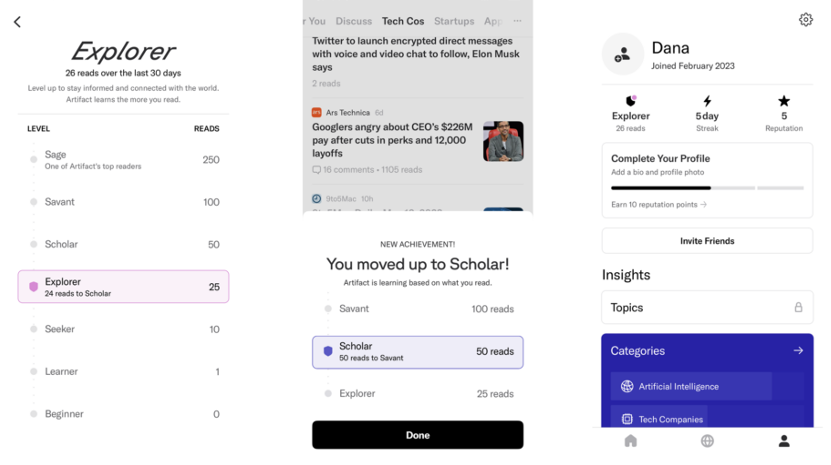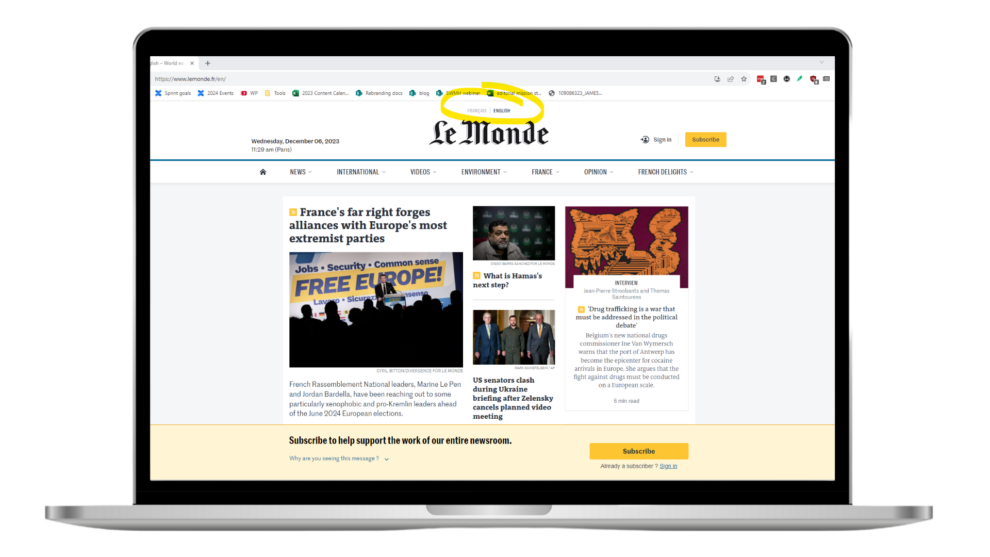Blog
What do digital news platforms need to reach financial sustainability? Insights for publishers
Introduction
Monetising digital content has been a challenge for news publishers ever since the advent of the internet. New ventures find it particularly challenging to carve a space in an already competitive niche. In recent weeks, both Artifact and The Messenger have made headlines: Artifact will be shutting down at the end of February, while The Messenger has run through almost all of its $50 million in capital funding and is struggling to find a viable revenue stream to keep afloat. What does this mean for legacy publishers, and what can they do to gain some traction on digital platforms? Despite recent developments may make one think that there is no room for innovation in the industry, many examples of successful news media ventures without immense starting capital exist.
Artifact’s Innovative Leap and Abrupt End
Last February, the digital news landscape buzzed with the launch of Artifact, a venture by Instagram co-founders Kevin Systrom and Mike Krieger. Unlike typical news apps, Artifact received a fair amount of media attention with its AI-driven approach to personalise news experiences. Its technology, including an intelligent recommendation algorithm and AI-powered article summaries, was widely praised for its ingenuity.
However, despite the technical inventiveness, a critical issue remained: financial sustainability. In spite of the founders’ deep pockets and the media attention it garnered, Artifact struggled to find a viable monetisation strategy for its user base.
“It’s really hard to build one of these things from scratch.”
Kevin Systrom, Artifact CEO, to Bloomberg in March 2023
As Artifact’s one-year journey neared its end, the founders took a tough but brave decision. Recognising the immense challenge of aligning their product with a sustainable business model in a competitive market, they decided to shut down operations. Systrom’s admission, “We dreamt big but hit the market reality”, encapsulates the daunting task of carving out a new niche in the digital news space where competition is fierce.

Artifact’s closure is not only a moment of reflection but also a source of inspiration. It shows how even ground-breaking technology and successful founders cannot guarantee the creation of a lasting digital consumer franchise. It also highlights the enduring power and engagement of traditional news brands, which continue to monetise and captivate their audiences effectively.
As we reflect on Artifact’s ambitious venture and its subsequent shutdown, it becomes clear that innovation in the news industry involves more than just technological advancements: it’s also about comprehending market dynamics, targeting the right audience, and engaging audiences effectively. Legacy publishers need to resist the temptation to embrace new trends before establishing a solid plan to ensure the financial viability of such a venture.
The Messenger: A Vision Unfulfilled
Another digital news platform that made headlines last week was The Messenger, a digital news media company mainly funded by Jimmy Finkelstein and launched in May 2023, striving to deliver accurate and non-partisan news. The New York Times reported that The Messenger was struggling financially and had to lay off 25 employees. Despite having a starting capital funding of $50 million, it has so far failed to find a sustainable revenue stream and has only generated $3 million in revenue since it launched.
A Nieman Lab article from last year critiques The Messenger’s approach as a mix of outdated ideas and overly ambitious goals, predicting its struggles to reach financial sustainability. The Messenger’s financial woes highlight the risks of overexpansion without a clear monetisation strategy. With a monthly burn rate of $5 million and challenges in achieving breakeven, The Messenger’s journey underscores the importance of cautious financial planning and realistic growth expectations for new media ventures. The platform’s struggle to find a sustainable business model despite substantial funding is a potent reminder that successful monetisation in digital news requires a delicate balance between ambitious content creation and prudent financial management.
Another venture that was recently launched and is backed by significant capital, Semafor, also raises questions about its financial sustainability. Semafor has had more success in generating revenue, with a lot of it coming from events it organises. Still, it remains to be seen whether it will ever reach true financial sustainability or need additional funding to remain afloat.
Key insights about strategy and financial sustainability from Il Post and Le Monde
Despite the recent news about Artifact and The Messenger, there are examples of sustainable, young ventures in the news industry without the need for millions in starting capital and unrealistic promises.
Il Post, an Italian news outlet led by editor Luca Sofri, offers a unique case study in financial sustainability. Sofri’s approach defies conventional wisdom by successfully hitting 50,000 subscriptions without implementing a paywall. This strategy hinges on building a trusting relationship with readers, encouraging voluntary subscriptions. Here, the focus is on quality journalism and reader engagement rather than restrictive access or unsustainable growth. This model suggests that legacy publishers can explore alternative revenue streams, prioritising reader loyalty and content value over traditional paywalls.
Another example of measured and sustainable expansion is Le Monde in English. Le Monde has balanced technological innovation with business acumen by leveraging AI for translation and focusing on a strategic market expansion while relying on a small team of journalists. Their method demonstrates the importance of adapting to global audience needs while maintaining the core journalistic values. Le Monde in English targets specific regions and audiences, such as news lovers in the US, where readers are happy to pay for a digital subscription to read news from a different perspective. This approach might be particularly relevant for legacy publishers looking to broaden their reach in a digitally connected world.


As noted by these examples, finding sustainable paths to financial success in the news industry is not out of the ordinary. Still, it requires careful planning and a long-term strategic vision, rather than funding rounds and an unclear target audience.
Key strategic takeaways for legacy publishers
What strategies work for new digital news ventures?
- Focused Audience Strategy: Le Monde’s targeted approach emphasises the effectiveness of serving a niche audience, ensuring deeper engagement and loyalty.
- Alternative Monetisation Models: Il Post’s success with voluntary subscriptions without a paywall highlights the potential of non-traditional revenue streams based on reader trust and engagement.
- Strategic Use of Technology: Le Monde’s integration of AI for market expansion underlines the importance of leveraging technology to enhance reach without compromising quality.
What do stories like Artifact and The Messenger highlight?
- Lack of clear monetisation strategy: Artifact’s closure demonstrates the risks of depending solely on technological innovation without a clear monetisation strategy.
- Risks of Overexpansion: The Messenger’s financial struggles reveal the dangers of rapid expansion and high burn rates without a sustainable business model.
- Need for Realistic Financial Planning: Artifact and The Messenger’s experiences underscore the importance of aligning financial planning with realistic market expectations and revenue potentials.
Conclusion: finding a balance between innovation and financial sustainability
The diverse paths of digital news platforms like Artifact, The Messenger, Semafor, Il Post, and Le Monde offer valuable lessons for the industry. Artifact and The Messenger’s experiences highlight the risks of over-reliance on technology and aggressive expansion without a solid financial base. In contrast, Il Post’s focus on trust and Le Monde’s strategic use of AI for market expansion demonstrate the potential of targeted, technology-integrated strategies.
These case studies underline a crucial takeaway for legacy publishers: sustainable success in the digital era demands a balanced approach, combining innovative content delivery with sound financial and audience engagement strategies.
Other Blog Posts

Stay on top of the game
Subscribe to Twipe’s weekly newsletter to receive industry insights, case studies, and event invitations.
"(Required)" indicates required fields

